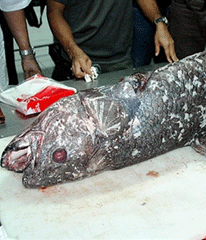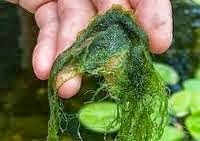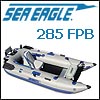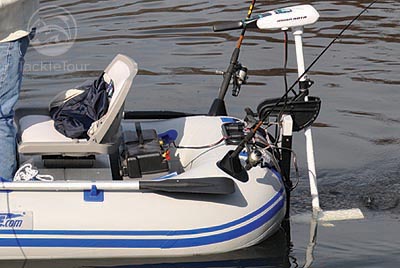
Dua nelayan asal Malalayang, Manado, Yustinus Lahama dan Delfie, tidak menyangka ikan hasil tangkapannya pada 19 Mei 2007 di perairan Teluk Manado cukup menggegerkan dunia. Pasalnya, ikan yang diketahui para ilmuwan dunia itu sejenis Latimeria menadoensis atau Coelacanth merupakan ikan purba yang sebenarnya sudah dianggap punah sejak 65 juta tahun lalu. Sekarang ikan tersebut telah dipajang dan membuat gempar peserta dari berbagai negara yang ikut dalam ajang World Ocean Conference (WOC) dan Coral Triangle Initiative (CTI) Summit, 11-15 Mei 2009. Yustinus mengatakan, ikan purba tersebut ditangkap ketika tersangkut kail miliknya. Ketika ditarik tampak seekor ikan dengan panjang lebih kurang satu meter dan berat 30 kg disertai bintik-bintik putih. Ikan itu didapat pada kedalaman sekitar 105 meter di pantai Malalayang, pukul 08.00 Wita, 19 Mei lalu. “Meski tergolong besar, ikan tersebut tampaknya tidak melakukan perlawanan ketika diseret hingga ke dalam perahu,” katanya, mengisahkan penangkapan itu. Menurut data berbagai sumber, Coelacanth diartikan sebagai “duri yang berongga” berdasarkan kata Yunani coelia (berongga) dan acanthos (duri). Ini merujuk pada fisiknya yang berduri pada sirip yang berongga. Coelacanth adalah ikan yang berasal dari sebuah cabang evolusi tertua yang masih hidup dari ikan berahang. Diperkirakan, sudah punah sejak akhir masa Cretaceous 65 juta tahun lalu, sampai sebuah spesimen ditemukan di timur Afrika Selatan, di perairan Sungai Chalumna tahun 1938. Namun, sejak itu Coelacanth ditemukan di Komoro, perairan Pulau Manado Tua di Sulawesi, Kenya, Tanzania, Mozambik, Madagaskar, dan Taman Llaut St Lucia di Afrika Selatan. Di Indonesia, khususnya di sekitar Manado, spesies ini oleh masyarakat lokal dinamai ikan raja laut. Coelacanth terdiri dari sekitar 120 spesies yang diketahui berdasarkan penemuan fosil. Sampai saat ini, telah ada dua spesies hidup Coelacanth yang ditemukan, yaitu Coelacanth Komoro, Latimeria chalumnae, dan Coelacanth Sulawesi, Latimeria menadoensis.“Hingga tahun 1938, ikan yang berkerabat dekat dengan ikan paru-paru ini dianggap telah punah semenjak akhir masa Cretaceous, sekitar 65 juta tahun yang silam,” kata Dekan Fakultas Kelautan dan Perikanan Unsrat Manado, Prof KWA Masengie. Menurut dia, ada seorang iktiologis (ahli ikan), Dr JLB Smith kemudian mendeskripsi ikan tersebut dan menerbitkan artikelnya di jurnal Nature pada tahun 1939. Ia memberi nama Latimeria chalumnae kepada ikan jenis baru tersebut, untuk mengenang sang kurator museum dan lokasi penemuan ikan itu. Pencarian lokasi tempat tinggal ikan purba itu selama belasan tahun berikutnya kemudian mendapatkan perairan Kepulauan Komoro di Samudera Hindia sebelah barat sebagai habitatnya, di mana beberapa ratus individu diperkirakan hidup pada kedalaman laut lebih dari 150 meter. Di luar kepulauan itu, sampai tahun 1990-an beberapa individu juga tertangkap di perairan Mozambik, Madagaskar dan juga Afrika Selatan. Namun semuanya masih dianggap sebagai bagian dari populasi yang kurang lebih sama. Pada tahun 1998, enam puluh tahun setelah ditemukannya fosil hidup Coelacanth Komoro, seekor ikan raja laut tertangkap jaring nelayan di perairan Pulau Manado Tua, Sulawesi Utara. Ikan ini sudah dikenal lama oleh para nelayan setempat, namun belum diketahui keberadaannya di sana oleh dunia ilmu pengetahuan. Ikan purba itu secara fisik mirip Coelacanth Komoro, dengan perbedaan pada warnanya. Ketika ikan itu ditangkap dengan jenis yang lain oleh dua nelayan di Manado, informasinya langsung menghebohkan warga hingga terdengar oleh Gubernur Sulut SH Sarundajang. Gubernur Sulut SH Sarundajang selaku penggagas pelaksana WOC, langsung mencari ikan tersebut dengan mengundang sejumlah peneliti dari berbagai akademisi, baik dalam negeri maupun luar negeri. Ikan tersebut langsung diamankan di Dinas Kelautan dan Perikanan Sulut, disimpan di cold storage agar bisa terus bertahan hingga pelaksanaan WOC dan kepentingan ilmiah. Manado Ocean Declaration (MOD) sudah disepakati pada WOC yang diikuti ribuan peserta dari 80 lebih negara di Manado, serta telah mencatat sejarah tentang penyelamatan laut dan konservasinya. Namun, keberadaan ikan purba yang ternyata masih berada di perairan di dunia ini tetap mencuatkan ide agar Coelacanth menjadi maskot WOC. Koordinator Media Center WOC Roy Tumiwa di Manado mengatakan, ikan purba itu sudah dijadikan bahan diskusi di tingkat pemerintah dan stakeholder kelautan. Keberhasilan menyelenggarakan WOC telah menjadikan Kota Manado terkenal ke berbagai penjuru dunia. Namun, akan lebih terkenal lagi bila ikan purba coelancanth kelak dijadikan maskot WOC.












































